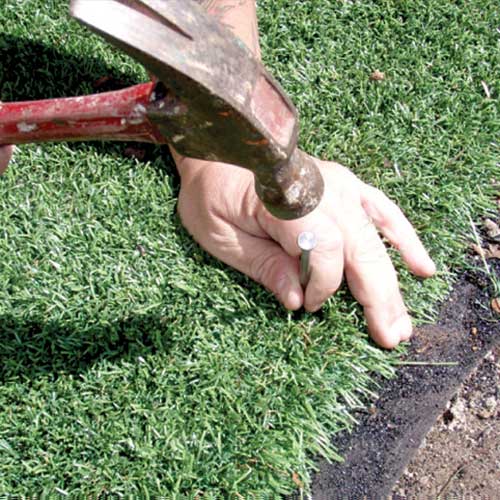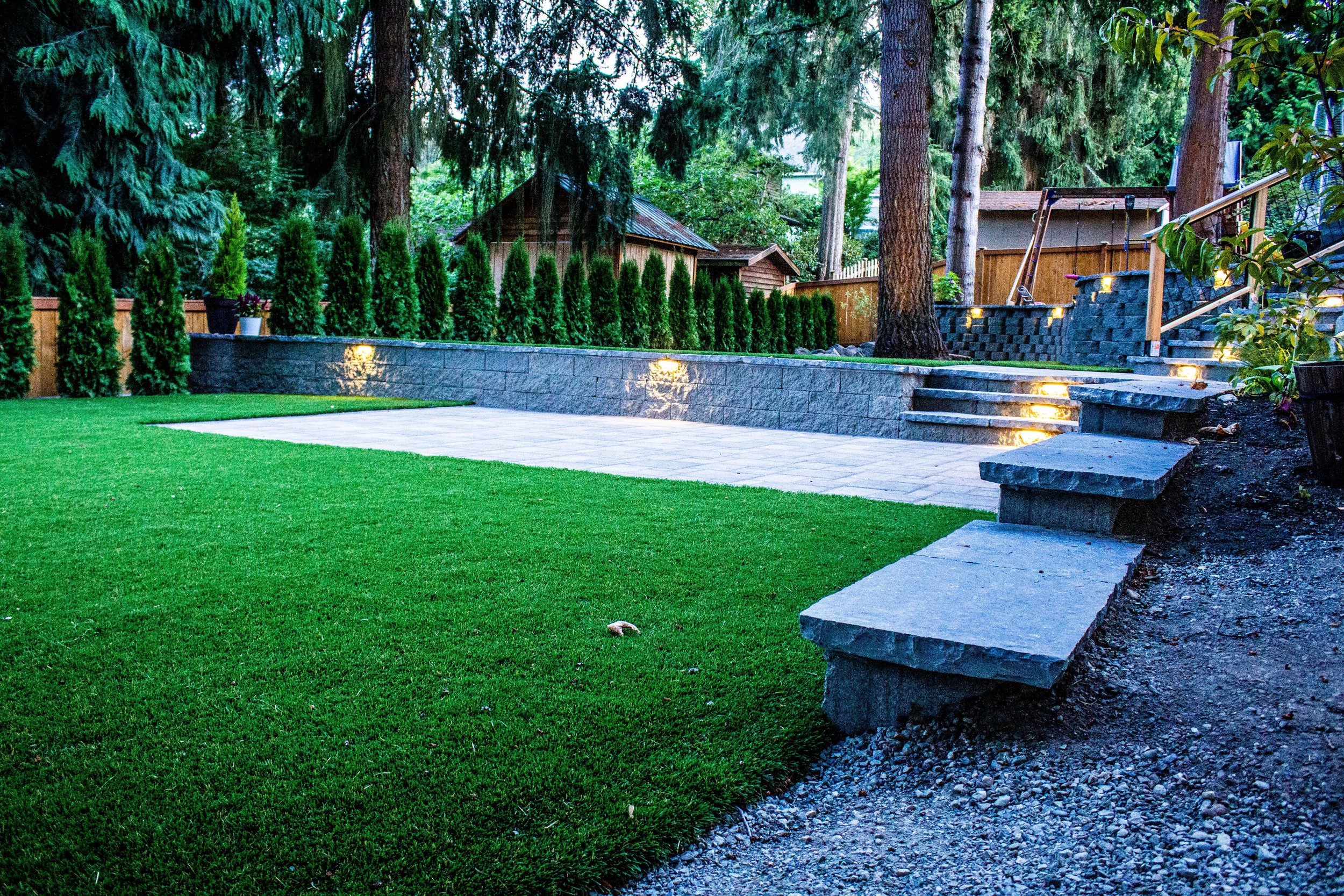Leading Phoenix Turf Companies Offering Premium Synthetic Grass Options
Wiki Article
Explore the Environmental Perks of Opting for Synthetic Grass Solutions
The adoption of artificial grass solutions provides an engaging opportunity to attend to pressing ecological difficulties. By substantially minimizing water usage and reducing the application of dangerous chemicals, these choices not only promote lasting landscape design however likewise protect regional ecological communities.Water Conservation Benefits
Among the most significant advantages of fabricated lawn is its ability to conserve water. Conventional lawn yards call for substantial watering, specifically in locations prone to dry spell or water restrictions. In comparison, synthetic grass does not require watering, substantially minimizing the overall need for water resources. This attribute is especially useful in dry areas where water scarcity is a pressing problem.By eliminating the need for regular watering, synthetic grass adds to sustainable landscape practices and helps minimize the ecological influence of extreme water usage. Additionally, the preservation of water encompasses the decrease of runoff, which can lead to dirt disintegration and river pollution.
Additionally, the installation of synthetic grass enables communities and house owners to allot water resources more effectively, focusing on important uses such as alcohol consumption water and farming. The change in the direction of synthetic grass not only promotes responsible water usage however additionally lines up with wider ecological goals focused on protecting all-natural resources.
As neighborhoods significantly focus on sustainability, the water preservation benefits of artificial grass offer a compelling instance for its adoption in business and property landscaping tasks.
Reduced Chemical Use
The transition to synthetic grass considerably lowers the dependence on chemical treatments frequently used in all-natural lawn upkeep. Typical turf management normally includes the application of fertilizers, herbicides, and pesticides to promote development and control bugs. These chemicals can present risks to human wellness, local wildlife, and the environment, adding to soil and water contamination.In comparison, artificial turf removes the demand for these dangerous substances. Once set up, it needs marginal upkeep, primarily including routine cleansing and irregular infill replenishment. This reduction in chemical usage not just profits the immediate atmosphere however additionally adds to more comprehensive eco-friendly security. By decreasing the release of artificial substances right into the community, synthetic grass advertises healthier dirt and water supply.
Furthermore, the lack of chemical overflow related to synthetic grass setups helps secure regional rivers from contamination, sustaining marine life and preserving biodiversity. Arizona artificial turf. As communities increasingly focus on sustainable practices, choosing for artificial lawn provides a practical solution that lines up with ecological conservation goals. Via this shift, residential property proprietors can enjoy lavish environment-friendly areas without compromising eco-friendly health, paving the way for a more lasting future
Reduced Carbon Footprint

Moreover, the installation of artificial turf can result in considerable water conservation. All-natural lawns require considerable amounts of water for watering, which not only contributes to the carbon footprint linked with water removal and therapy yet also strains local water sources. In contrast, synthetic grass requires marginal upkeep, needing no watering, thus substantially reducing water use and its connected power prices.
Furthermore, the durability of synthetic grass adds to its lower carbon effect. With a life-span of approximately 15 years or even more, the requirement for frequent replacements is diminished, leading to less waste and reduced energy consumption in manufacturing and dealing with traditional lawn alternatives. Generally, fabricated turf provides a sustainable alternative for environmentally conscious landscape design.
Habitat Preservation
Habitat conservation is an important consideration in the dispute over landscape design selections, particularly when comparing synthetic grass to all-natural turf. Natural yard lawns often need comprehensive maintenance, original site consisting of the use of herbicides, chemicals, and plant foods, which can adversely impact regional ecosystems. These chemicals can leach right into the dirt and waterways, harming native plants and animals and disrupting local habitats.
In comparison, synthetic grass offers a possibility to decrease the environmental impact of landscape design. By going with synthetic yard, property owners can reduce the interruption of all-natural environments associated with conventional yard care techniques. Synthetic grass removes the demand for dangerous chemicals, thus protecting close-by wildlife and preserving the integrity of bordering ecosystems. Furthermore, the installation of synthetic grass can cause the conversion of former turf areas right into even more biodiverse landscapes, such as pollinator gardens or indigenous plant locations, which can sustain local wildlife.
Ultimately, the shift to fabricated lawn not only conserves water and decreases upkeep efforts but additionally promotes a more harmonious connection in between human tasks and the native environment, promoting habitat preservation at the same time.
Long-Term Sustainability
Long-lasting sustainability is an essential variable in evaluating the benefits of synthetic grass over standard turf yards. Among the most significant advantages of synthetic grass is its toughness; it can last as much as 15-20 years with minimal upkeep, whereas natural yard needs frequent reseeding and substitute. This durability decreases the need for constant find out here sources, such as water, fertilizers, and chemicals, which are important for preserving a healthy yard yard.Furthermore, synthetic grass adds to a decrease in carbon emissions connected with yard treatment tools. Traditional yards commonly call for gas-powered mowers, trimmers, and blowers, all of which contribute to air contamination. Phoenix turf companies. On the other hand, man-made turf gets rid of the demand for such equipment, promoting a cleaner setting
Additionally, the production of synthetic grass increasingly makes use of recycled materials, enhancing its sustainability account. As makers adopt environmentally friendly techniques, the environmental impact of synthetic grass proceeds to lessen.

Conclusion
The fostering of synthetic grass solutions provides significant environmental advantages, consisting of significant water conservation, lowered dependence on harmful chemicals, and a reduced carbon footprint. try this out Synthetic grass aids in preserving natural environments by reducing land disturbance and advertising long-lasting sustainability through the usage of long lasting materials. Collectively, these elements highlight the potential of synthetic grass to contribute favorably to environmental health and offer a sensible choice to typical landscape design practices in an increasingly resource-conscious world.In contrast, artificial turf does not require watering, substantially lowering the general need for water sources. By lessening the release of synthetic compounds into the community, artificial turf advertises much healthier dirt and water systems.
Furthermore, the installment of artificial turf can result in considerable water conservation. In comparison, fabricated grass requires marginal upkeep, needing no watering, thereby substantially decreasing water usage and its connected power prices.

Report this wiki page